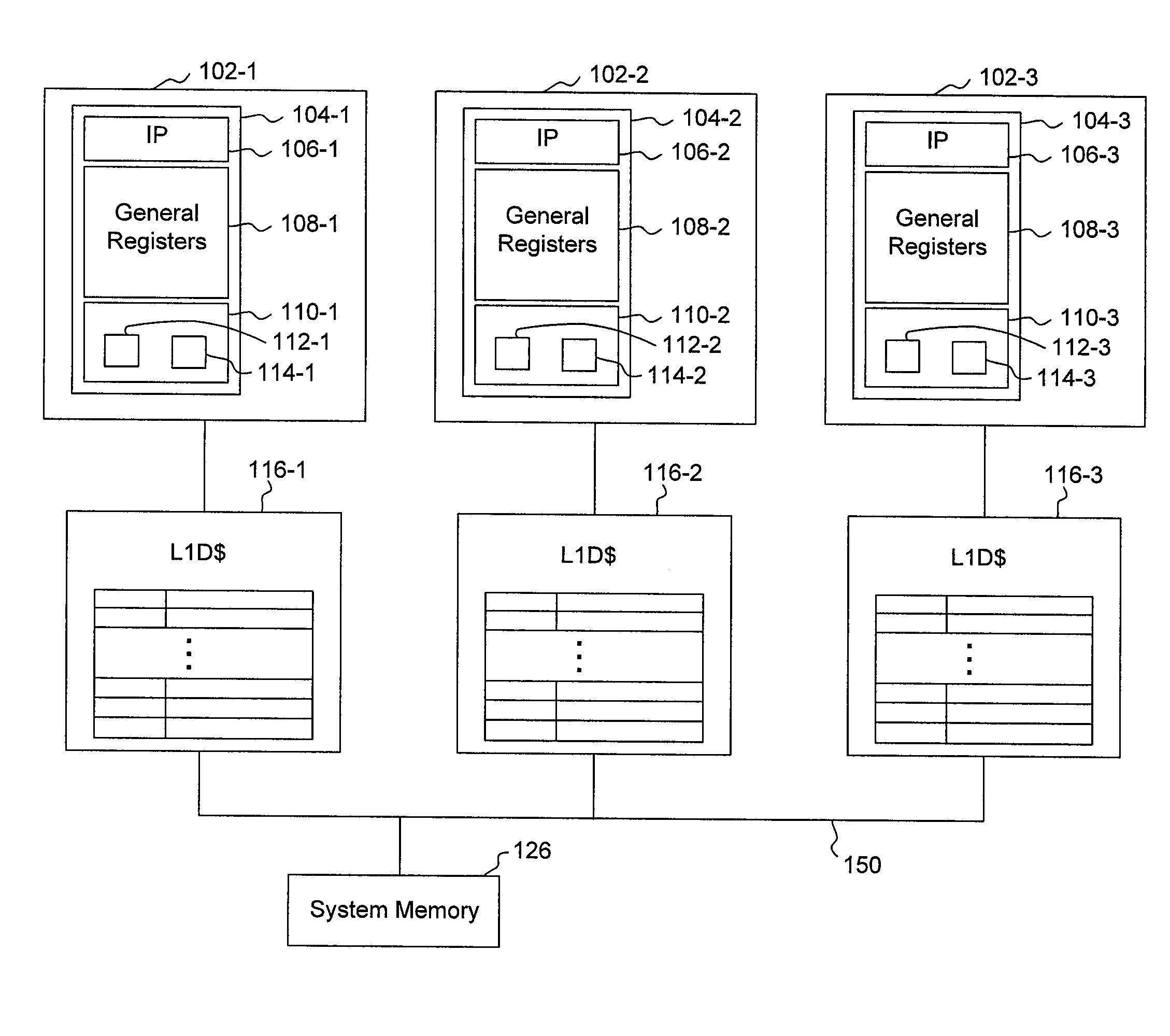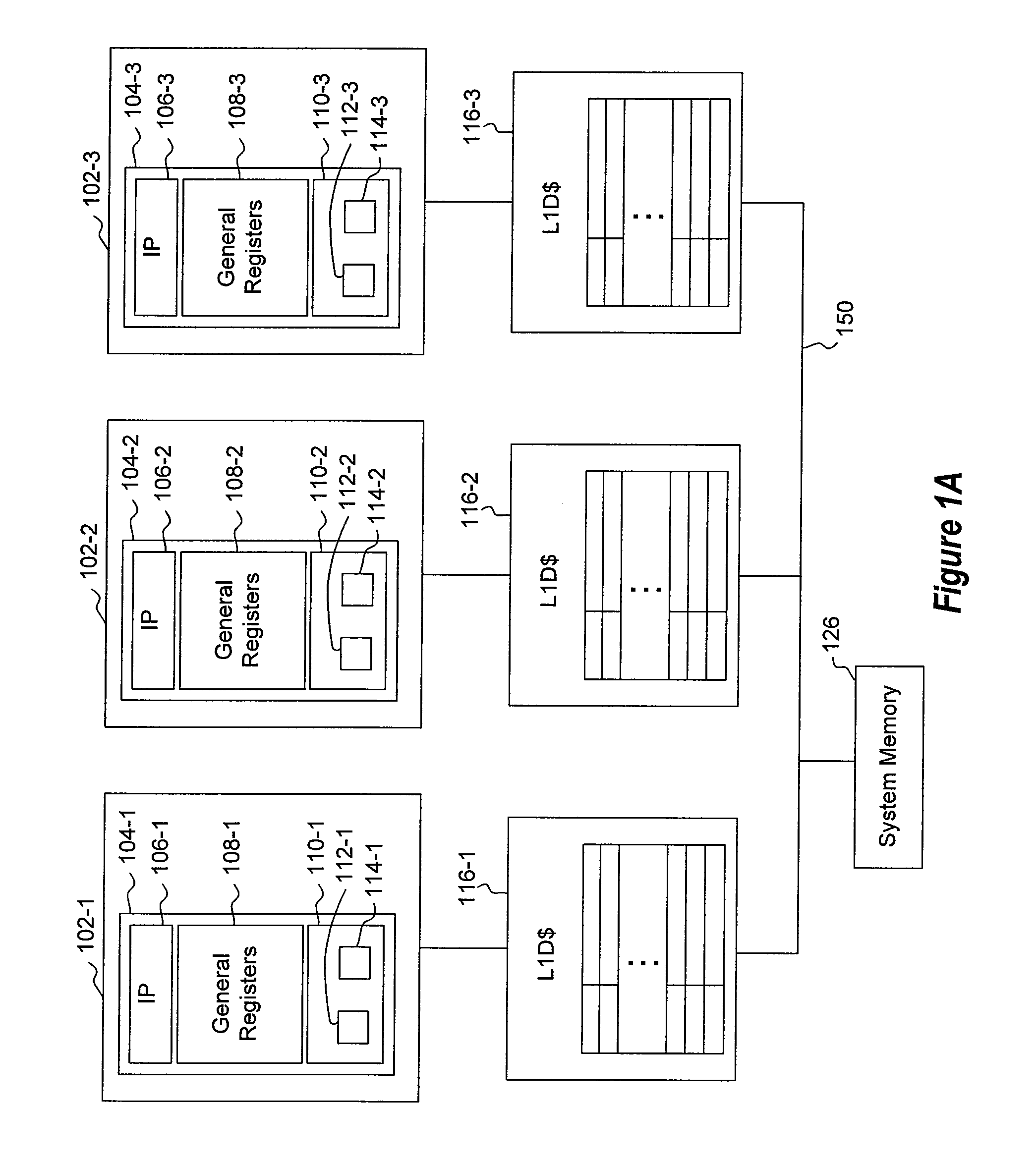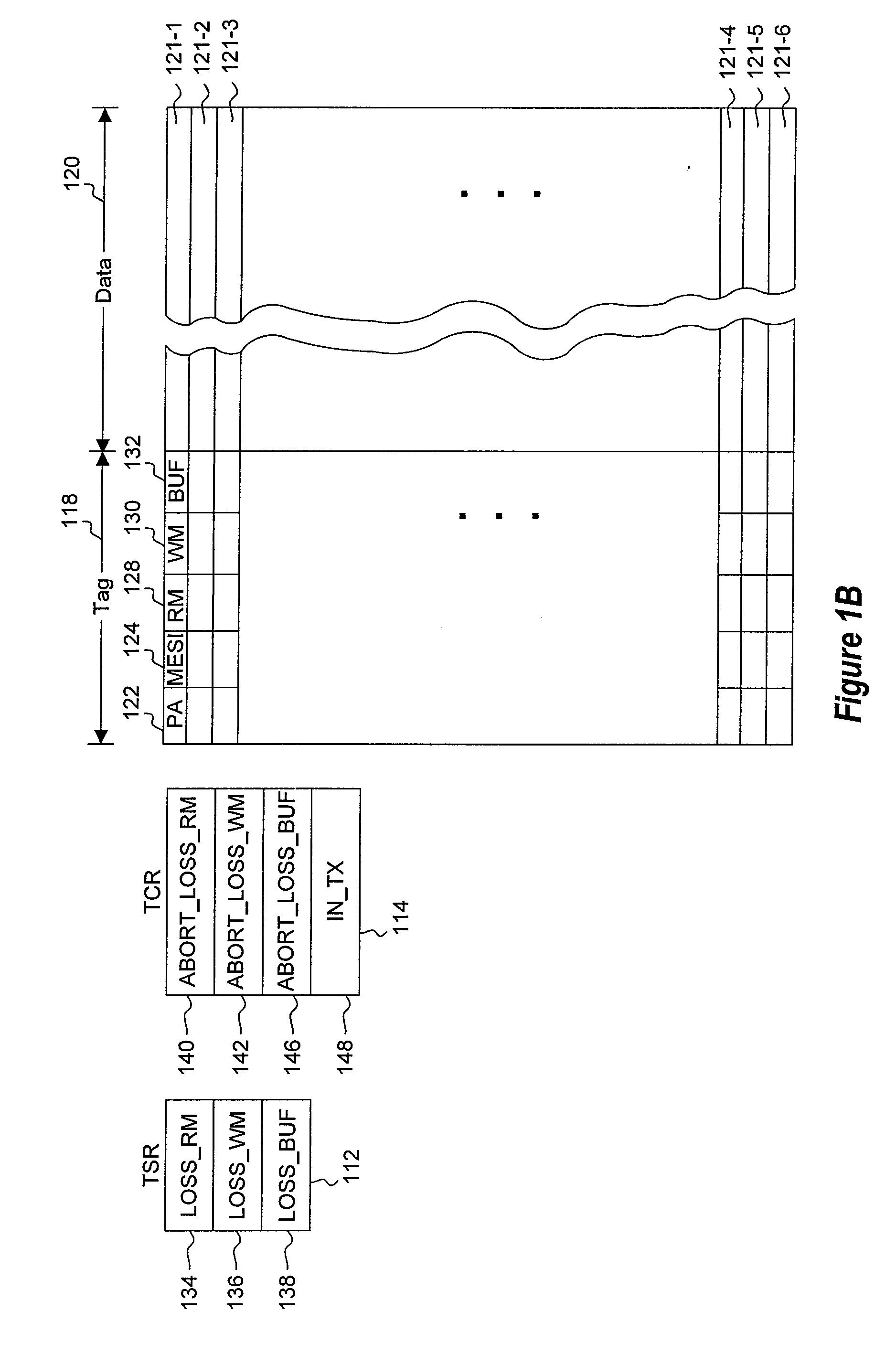Efficient garbage collection and exception handling in a hardware accelerated transactional memory system
a transactional memory system and garbage collection technology, applied in the direction of memory adressing/allocation/relocation, multi-programming arrangements, instruments, etc., can solve problems such as automatic memory management, serious problems can occur, and challenges may aris
- Summary
- Abstract
- Description
- Claims
- Application Information
AI Technical Summary
Benefits of technology
Problems solved by technology
Method used
Image
Examples
Embodiment Construction
[0024]The following presentation is organized into a broad description of the invention and surrounding context, followed by detailed examples of some embodiments that may be implemented.
[0025]Fast Flexible Unbounded Transactional Memory (UTM)
[0026]Many modern computer systems comprise multiple processors, caches, and a memory system hierarchy that provides a shared memory to multiple threads running on the processors. Threads may concurrently access shared data structures in the shared memory.
[0027]It can be difficult to program such machines. Shared data may be accessed at any moment by other threads. It can be difficult to keep other threads from visiting a data structure while it is being modified, to guarantee data structure invariants across threads, etc. For example, consider a job scheduler that tracks the number of running jobs and finished jobs with counter variables. The sum of these counters should always equal the total number of jobs. The following C code illustrates a...
PUM
 Login to View More
Login to View More Abstract
Description
Claims
Application Information
 Login to View More
Login to View More - R&D
- Intellectual Property
- Life Sciences
- Materials
- Tech Scout
- Unparalleled Data Quality
- Higher Quality Content
- 60% Fewer Hallucinations
Browse by: Latest US Patents, China's latest patents, Technical Efficacy Thesaurus, Application Domain, Technology Topic, Popular Technical Reports.
© 2025 PatSnap. All rights reserved.Legal|Privacy policy|Modern Slavery Act Transparency Statement|Sitemap|About US| Contact US: help@patsnap.com



